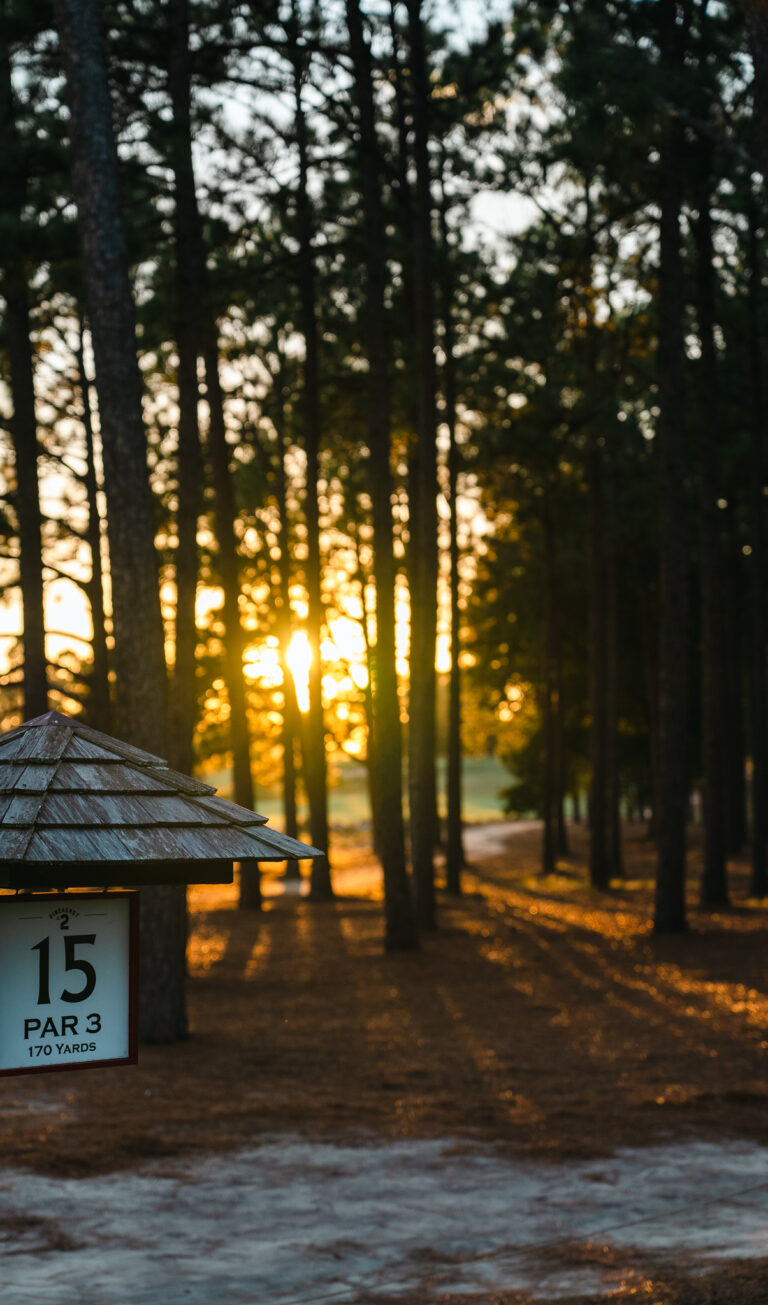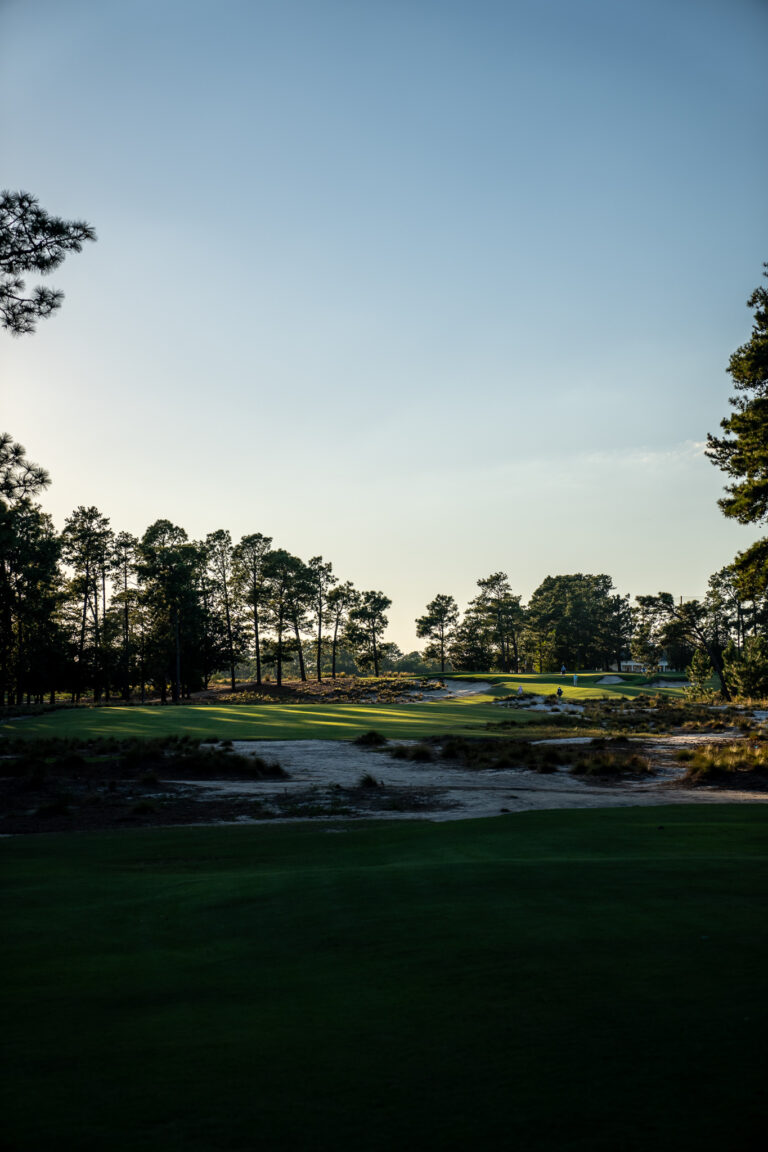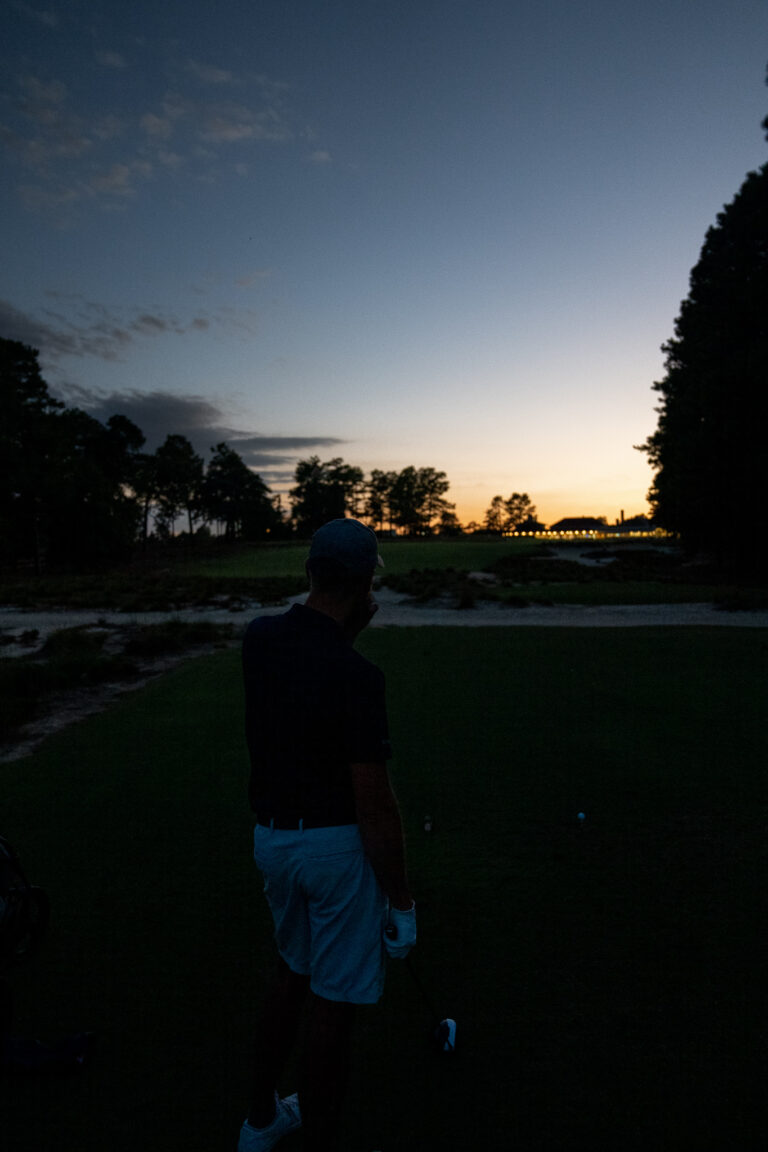Words by Alex Podlogar
Photos by Matt Gibson
You couldn’t see the flag on the 18th green of Pinehurst No. 2. But you could see the figure.
Silhouetted against the faint glow of the lights rimming the clubhouse façade, the figure moved with pace toward the three players who had given up chasing the light and, thusly, chased only what remained.
There was no noticeable moon, though Jupiter, shining as a lone star, appeared low in the blackened eastern sky. Dusk had been left behind as nothing more than a short-term memory.
The figure, average in height and build as he came into moderately better view, spoke as his brisk walk drew him nearer. Surely he was a ranger, tasked with removing the last players from No. 2. Game called on account of darkness. It would’ve been no less understandable as it was appropriate.
“See the tallest chimney on the clubhouse? See the much shorter one to its right – the farthest to the right? That’s your line,” he said. “I’ll get your yardage.”
The game was still on.
Pressing his circular spectacles tightly to his round face, the figure, this man, found a sprinkler head mere steps away, and bowed toward the turf. “One-forty-two to the middle. Play it 135.”

While beautiful, the Golden Hour at Pinehurst can fade into darkness quickly.
No. 2 is an easy walk as golf courses go – until it is not. In few walks of life can mental strain make such an impact on what, for many, is a basic life function that needs no further examination. But the grind of No. 2 waits on no one, and often, on or about the 15th tee, the player finds that he or she is nearly spent. In every way.
And now the lights are on up ahead. There is a discernible murmur of a veranda crowd on alert, for there are now four figures barely distinguishable, but still swinging sticks, off there in the considerable distance. And one of them has made a decision based on his legs (which ache), his lower back (which clutches), and, perhaps most importantly – at least in this moment, to him – his eyes (which surely are betraying him at this hour).
“I should take extra club,” the player remarked.
“Just put a smooth swing on it,” the figure said. “You’ll hit it.”
That approach, struck well enough like the two before it, hit its apex against the coal-blue sky and began its natural, fatigued, fading bend to the right. The player didn’t see it land – none of them did – and the only thought had to be the approaching terror of knowing the ball must have surely ended in the right greenside bunker.
Alas, it was short of it. He had not taken extra club.

Fading light at Pinehurst makes for brilliant vistas on No. 2.
Putting quickly, the three players finished around the green, each tapping in to make sure they capped this exhilarating collection of moments in the cup itself. The gentleman ranger collected the flag and pin from the 18th hole for safe-keeping, completing his duties for the day. “I just wanted you boys to be able to finish,” he said.
Asked his name, he replied that it was Geoff, and with a congenial smile, made for a few minutes of introductions and small-talk. He asked to take a photo of the young men on the green and with the flag. It didn’t turn out, for the iPhone lost its battle with the dark and rendered only a blur of faces on its screen.
And then Geoff walked away, leaving the three players with a story they had to tell.
There is another story of a mysterious man in Pinehurst.
It has been told often by the man who experienced it – architect Bill Coore. In the midst of he and his partner Ben Crenshaw’s work in restoring Pinehurst No. 2, Coore wandered to his car in the lot as dusk was descending. Mindful of the work at hand and less of his surroundings, a man appeared to Coore.
Of average height and build, spectacled with wire rim glasses, the man kindly approached Coore, offering a modicum of unsolicited advice directly related to the project that had consumed the grand course.
“Mr. Coore,” he began, “just so you know, as that course goes, this entire town goes.”
And with that, the man walked away. Left alone, it dawned on Coore how much the apparition had resembled Donald Ross himself.
Perhaps his name was Geoff.
Perhaps.

On the tee at 18, darkness truly began to fall. But thanks to a kind gentleman, there would be a grand finish.

